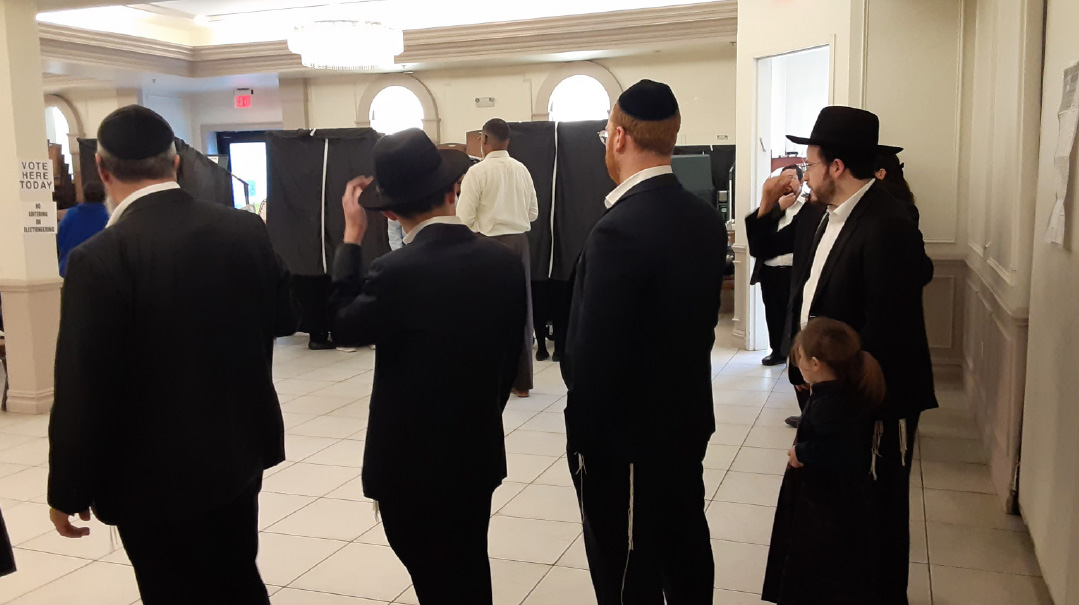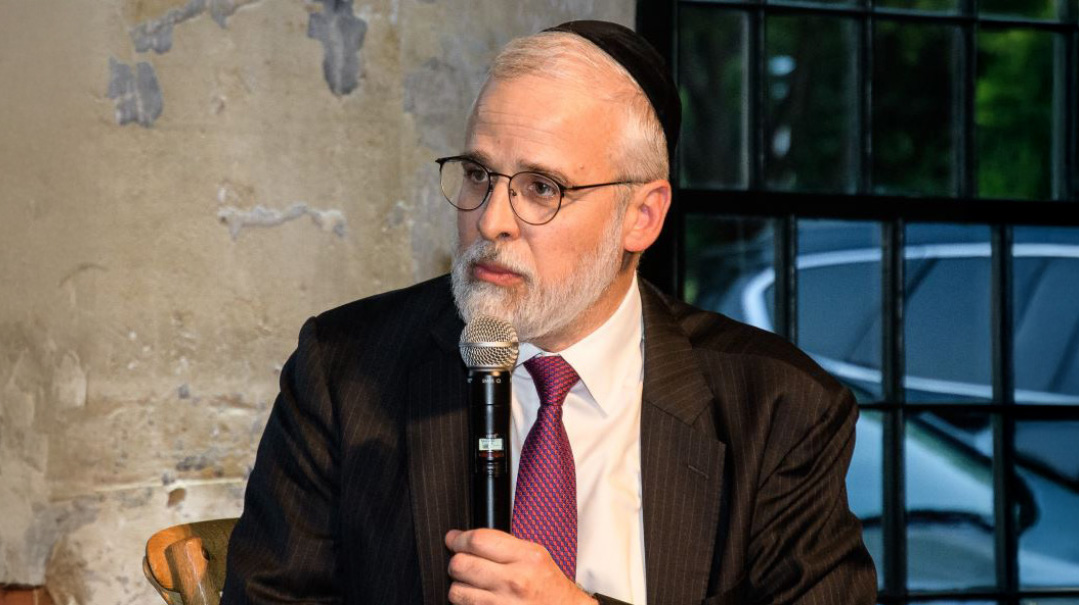Outward Bound

The Kuzari explains that we must look at every mitzvah opportunity as a personal invitation to the King’s palace
T
he Gemara famously teaches us (Taanis 29a), “Just as we diminish our simchah when the month of Av arrives, so too when Adar arrives we increase our simchah.” It’s because of this Chazal that litigants are advised to postpone court cases until Adar, a time of favorable mazel and brachah.
This Gemara begs for some clarification. We know what actions we’re meant to take to diminish our simchah in Av. Aside from the activities we normally associate with simchah, we also have restrictions on laundering, bathing, pleasure shopping, eating meat, and engaging in business beyond what is deemed necessary.
But how would the flip side manifest in Adar, when we’re instructed to increase our simchah? Should we be showering twice a day? Doing loads of laundry day and night? Eating steak for breakfast? Shopping for new cars and homes even if we don’t need them? Or to borrow from the contemporary parlance, do we simply “do simchah”? Were Chazal mandating a feeling and then leaving it up to us to figure out how to achieve it? And can feelings be mandated altogether?
We know the Torah itself commands us to perform mitzvos and avodas Hashem b’simchah, and the tochachah in parshas Ki Savo details the heavy price we pay for not doing so.
The Kuzari explores how we can reach simchah in our mitzvah fulfillment, explaining that we must look at every mitzvah opportunity as a personal invitation to the King’s palace, with a private audience at His table, no less. That is certainly something worth getting happy about.
Inasmuch as we don’t often get invitations like that, we can draw on similar experiences to help us imagine these emotions. I recall the feeling of ecstasy I experienced when I attended a mesibah in the Telshe Yeshivah here in Chicago a number of years ago, which was followed by dancing in the beis medrash.
The rosh yeshivah, Rav Avrohom Chaim Levin ztz”l, was dancing in a small circle with a select few rebbeim, and he walked over to me to and invited me to join them. I held his hand and felt him clutch mine, like his own child or talmid, of which I was neither. It remains one of the most memorable and satisfying moments of my life, a personal invitation to the beis hamelech.
Similarly, I love reliving in my mind the invitations to my own beis hamelech, Rav Elya Svei ztz”l’s home or office, and the opportunity to have a private audience with him, to bask in his presence and learn from his chochmah. When I returned home from learning in the Ponevezher Yeshivah, the Rosh Yeshivah sat me down in his house, sending everyone else away, and “debriefed” me on whatever I could share about Rav Shach. It felt like Gan Eden in This World.
We can bring this indescribable sense of satisfaction and simchah, says the Kuzari, to every mitzvah we perform.
Going back to our original question, we see that the Torah can and does dictate emotion. But what is the specific marbim b’simchah of Adar? Is it merely the feeling of simchah, which honestly can be quite challenging to attain, or was there something more concrete that Chazal had in mind?
As an aside, it’s worth relating an experience I had as a beis medrash bochur back in 1982, when the Lakewood rosh yeshivah, Rav Shneur Kotler, was terribly ill with the sickness that eventually took his life the following Tammuz. It was no secret that the Rosh Yeshivah’s life was in jeopardy, and as Adar arrived there was a palpable cloud over the entire olam haTorah.
I approached my rebbi, Rav Elya ztz”l, and asked him what our avodah was. Was it even permissible, let alone possible, to be b’simchah when the life of one of the most pivotal marbitzei Torah in America and the world was at stake? Uncharacteristically, the Rosh Yeshivah didn’t answer. He let out a big sigh instead and suggested I call the Lakewood Mashgiach, Rav Nosson Wachtfogel ztz”l for guidance.
When I reached the Mashgiach, he told me that the zeman is a zeman of simchah and must not be compromised. But since Klal Yisrael was in a time of tzarah, I should dedicate one half hour a day to take part in the pain of the tzibbur. When I returned to Rav Elya with the answer, though, he looked at me incredulously and asked, “Did he tell you how you are supposed to do that?” I was embarrassed to respond that I’d been too intimidated to ask. But the marching orders had been given — simchas Adar is nonnegotiable.
Practically speaking then, what are we supposed to do? What is our mandate of simchah?
Perhaps we can suggest an answer based on the mishnah in the beginning of Maseches Shekalim. The mishnah tells us that on the first day of Adar, the Beis Din would announce that the annual shekalim contribution was due by Nissan. Furthermore, they would send out people to check the conditions of the roads, mikvaos, and other public facilities, to ensure they were operational in time for the impending Pesach pilgrimage. They also reminded the farmers not to plant kilayim and would check on them again two weeks later to make sure they were compliant.
This mishnah can seem perplexing; did the Beis Din have nothing more important to do with their time other than taking responsibility for public facilities and sending out reminders about the shekalim contribution? Apparently, the answer is a resounding no. This was the Beis Din’s preoccupation in Adar — to look after the needs of everyone else. The greater one is, the more he looks out for the needs of others, all the way down to the potholes and alleyways of Yerushalayim.
Who hasn’t heard the legendary story of Rav Yisrael Salanter walking around in shul on Erev Yom Kippur with a hammer, so he could bang in any protruding nails from the shul’s furniture?
If we look into the words of the Rambam at the end of Hilchos Megillah, we’ll see that he describes what the simchah of Purim really is. The Rambam tells us that there is no greater simchah on Purim than gladdening the hearts of the widows, orphans, and downtrodden, and that our focus on this great day should be on making them happy, not ourselves.
In Hilchos Yom Tov, the Rambam adds that anything else is simply a simchas hakeres, a merriment of one’s own stomach, hardly what the Torah intended as simchas Yom Tov. Moreover, the Rambam writes that one who indeed concentrates on being mesamei’ach the less fortunate and the brokenhearted is likened to the very Shechinah itself, as it were, for that is the middah of Hashem.
Is it possible, then, that we have a window into what marbim b’simchah means on a practical level? Perhaps Chazal were telling us that it’s a time to raise our awareness of the needs of others and care a little bit less about ourselves.
Sfas Emes writes that the mitzvah of giving shekalim, which coincides with Adar, was intended, among other things, to train us to become a nation of givers. And now that we no longer have a Beis Hamikdash, we were given the mitzvah of matanos l’evyonim, (as well as maos chittim in Nissan), to ensure we remain a nation of givers. (Interestingly, the Rambam writes that one must even borrow money to be able to give his half-shekel obligation; apparently this chinuch of becoming givers is incumbent on all of us, regardless of our financial status.)
The Rambam teaches us that the truest and most significant form of simchah comes from being mesamei’ach others, and this is what our Adar should consist of: a focus on everyone and everything else besides ourselves. This keen awareness of others’ needs can be manifested so many different ways on Purim, whether by investing time to visit a homebound person, or even when choosing which manos we send.
I recall that one year, before we brought shalach manos to an elderly couple, we contemplated what they could actually eat. We settled on a bag of salad and a cantaloupe. As I handed them to the husband, he gave me a great smile and an extra special yasher koach, thanking me for the obvious care and attention we’d given to his two gifts of food. He certainly valued them as much as any $200 box of designer chocolate that he never could have eaten anyway. And we lingered in their apartment for a while after, perhaps the greatest gift of all.
I would venture to suggest that we all reconsider our Purim schedules, and instead of sending myriad shalach manos to friends who don’t need an affirmation of our friendship, we cut the list down drastically to those who would truly appreciate the attention and time. In fact, Rav Yerucham Levovitz wrote that this is really where our mishloach manos should be sent, to those who need the attention the most.
(I once mentioned this in a derashah I gave before Purim to the neighborhood women, reiterating that we don’t really give shalach manos to our close friends. I should have paid better attention to the attendees; an annual recipient of our shalach manos was there and asked me afterward if our families were not really friends after all. So, to anyone out there reading this article who receives a shalach manos from my family, we make exceptions for our most special friends.)
Utilizing shalach manos as a vehicle to give simchah can apply to those who give and those who get them. Those who receive shalach manos have an opportunity to spread simchah to anyone who comes through their doors. As a child, I was honored with bringing the special shalach manos, a sponge bundt cake with a bottle of wine in the center, that my mother prepared for our rav, Rav Mordechai Savitzky ztz”l. He would farher me and give me five dollars, a veritable king’s ransom then, and the special attention he gave me created warm memories that have stayed with me since.
True simchah is inseparable from selflessness; selfish indulgence is anything but.
Although there is no lack of anecdotes about the selflessness of great Yidden, there is one that has impressed me ever since I read it, and is an incredible illustration of just how far this middah can go.
The great maggid, Rav Sholom Schwadron ztz”l, served as the chazzan in Chevron Yeshivah on the Yamim Noraim for many years. Once, in the middle of chazaras hashatz, Rav Shalom began singing random tunes that were clearly not part of the davening. He continued for quite a while, until he eventually got back on track. Nobody understood what was transpiring, and some even wondered if the legendary baal tefilah was losing it.
One of his sons asked him about it afterward, and Reb Shalom agreed to share what had happened, provided his son would keep the answer a secret (apparently only until Rav Shalom’s petirah). He explained that an elderly man, who suffered from incontinence, was davening in close proximity to the chazzan’s amud. Unfortunately, he soiled himself, and the smell made it halachically forbidden to daven.
Unwilling to embarrass the elderly man, Reb Shalom preferred to make a fool of himself by singing random niggunim, surmising that somebody would eventually understand and help him out by escorting the man out of the beis medrash.
Who would think like this? Only someone like Reb Shalom, who embodied care and compassion for all of Hashem’s children. It is a person like that, who the Rambam tells us is akin to the very Shechinah, the epitome of one who truly knows how to be mesamei’ach others and not focus on himself, whom we send as our sheliach tzibbur. And we can become the same!
We still have a nice stretch of Adar left, including Purim itself. Not only that, Rashi tells us that the marbim b’simchah lasts all the way through Nissan, the season of miracles for Klal Yisrael. Hashem showed us great love and affection by turning His world over just for us. Let’s do our part by emulating that love and affection as we treat our fellow brothers and sisters in kind. We will all be happier for it.
(Originally featured in Mishpacha, Issue 951)
Oops! We could not locate your form.







